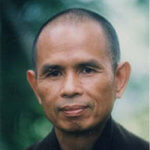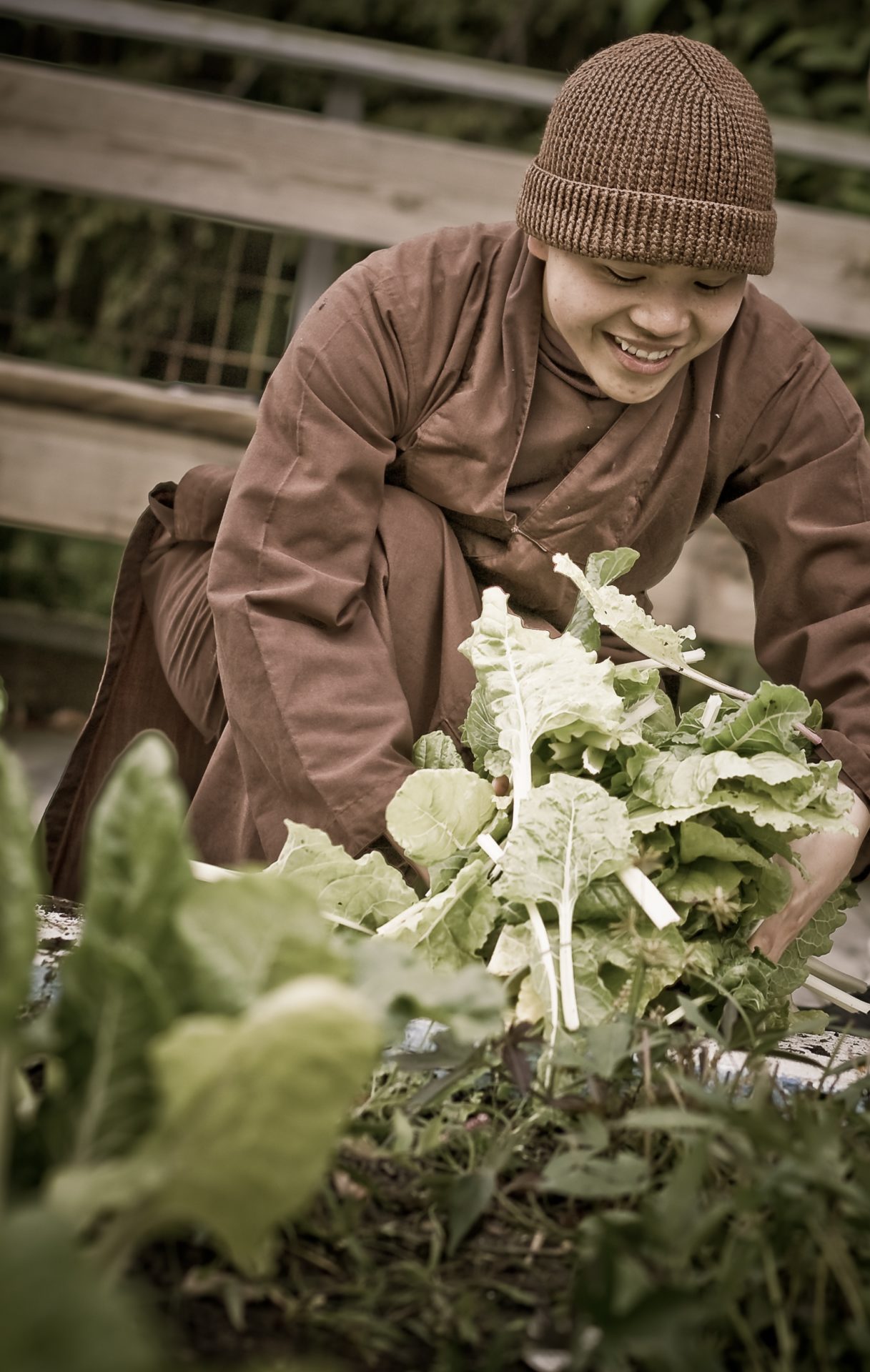By Thich Nhat Hanh in October 2017
In this Dharma talk from 2007, Thay offers many teachings on interbeing, including seeing ourselves as a five-year-old child, meditation on a grain of corn, contemplating the actions of our right and left hands, and the Sutra of the Son’s Flesh.
Good morning, dear Sangha. Today is the twenty-first of September in the year 2007. We are in Deer Park Monastery on our retreat with the theme,
By Thich Nhat Hanh in October 2017
In this Dharma talk from 2007, Thay offers many teachings on interbeing, including seeing ourselves as a five-year-old child, meditation on a grain of corn, contemplating the actions of our right and left hands, and the Sutra of the Son’s Flesh.
Good morning, dear Sangha. Today is the twenty-first of September in the year 2007. We are in Deer Park Monastery on our retreat with the theme, Awakening Together.
The United Nations General Assembly has set September 21st as the International Day of Peace. At noon today, we will invite the big bell to sound. Wherever you are, when you hear the bell, you should stop and go back to your breathing. Enjoy breathing in and out several times, and send your energy of peace to the world. To the people in Iraq, to the people in all places on Earth who suffer from war. We send our energy of love and peace to people who are very poor, who cannot afford to buy food for themselves and for their children. To the people who are victims of discrimination, political suppression, and so on. Please remember to stop and do this.
This morning at six o’clock, when the young people were still sleeping, we were practicing sitting meditation. We practiced like this: Breathing in, I see myself as a five-year-old child, vulnerable and fragile. Breathing out, I smile to the five-year-old child in me. Many of us have forgotten that we were a five-year-old boy or girl. But the five-year old child is still alive in us, and sometimes they need our presence because they may be wounded. They wait for us to come home and embrace them, to hold them tenderly, with a lot of compassion.
We also practiced: Breathing in, I see my father as a five-year-old boy in me. Breathing out, I smile to my father as a five-year-old boy in me. At five years old, my father was also fragile and easily wounded, so I recognize that, and when I breathe out, I smile to my father as a five-year-old boy. And then we practiced: Breathing in, I see my mother as a five-year-old girl in me. She was so fragile and vulnerable. She may have suffered as a little girl, so when I breathe out, I smile to her. I hold her dearly in my heart, so she can heal in me. This is a practice of meditation offered by Plum Village, which has brought a lot of healing and reconciliation to many of us.
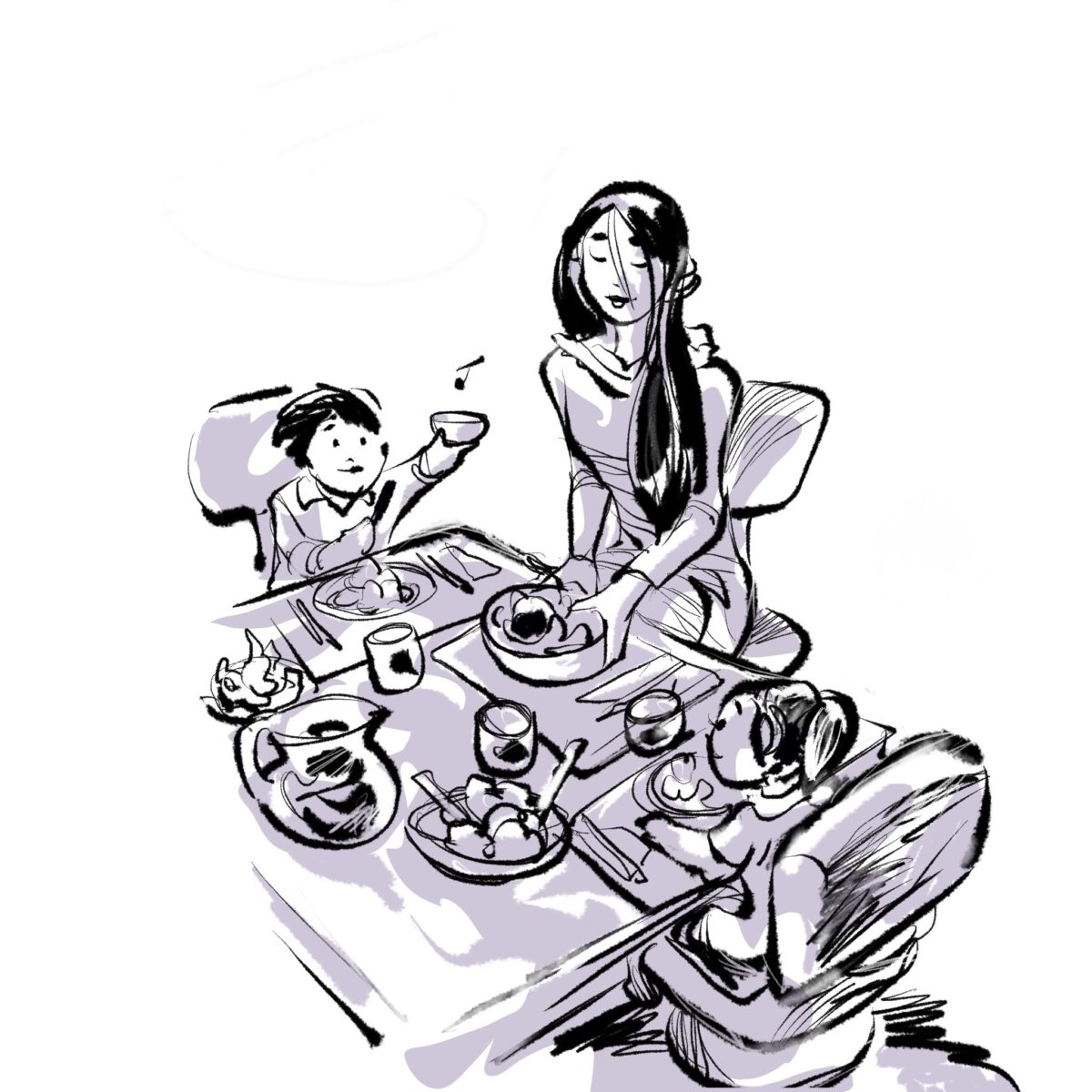
Not Same, Not Different
Today I would like to offer you the meditation on a grain of corn. Suppose we take a grain of corn and plant it in damp soil. One week later, the seed of corn will sprout and begin to become a young corn plant. Around twenty-one days later, we may come and ask the plant of corn that is still very young, “Dear corn plant, do you remember when you were still a seed?” Maybe the corn plant has forgotten. Because we have been observing, we know that the young plant of corn has come from the seed of corn. But the corn plant does not remember that she has come from a grain of corn.
When we look at the corn plant, we don’t see the seed of corn anymore. Right? Because it has been twenty-one days, and the seed of corn has become a young plant. We might think that the grain of corn has died, but that’s not true; it has become the plant of corn. And if we are intelligent enough, when we look at the plant, we can still see the grain of corn in it. If you are capable of seeing the grain of corn in the plant of corn, you have a kind of wisdom that the Buddha called the wisdom of nondiscrimination. You do not discriminate between the grain of corn and the plant of corn anymore. You see that they are the same thing, they inter-are. You cannot take the grain of corn out of the plant of corn, and you cannot take the plant of corn out of the grain of corn. So looking deeply at the young corn plant, you can see the grain of corn still alive, but with a new appearance. The corn plant is the continuation of the seed. We all agree on that.
Many of us, as children, don’t have time to sit down and look deeply like that. We think that our father is outside of us, our mother is outside of us. That is partly true, but not entirely true. Our father is in us, he is fully present in each cell of our body. Biologists agree. Our mother also is fully present in every cell of our body. She’s in us, and the feeling that our mother is outside of us can be called a wrong feeling, a wrong perception.
The corn plant may say, “Well, I don’t know. I have not heard of that grain of corn.” But in fact, the plant of corn is the grain of corn; it is its continuation. If you learn the way of the Buddha, you will see the nature of interbeing. Interbeing means you cannot be yourself alone; you have to inter-be with your father. I inter-am with my father. I inter am with my mother. In the Buddhist teaching, to be is to inter-be, because you can never be by yourself alone. You have to inter-be with your father, your mother, and so on.
It is regrettable that we cannot find the word interbeing in the dictionary. You should write to the publishers of the dictionaries and ask them to put that word in.
Because we are so busy studying and playing, we don’t have time to look at the nature of interbeing, of our father and of ourselves. When we grow up, sometimes we get angry at our father and our mother. But in the wisdom of the Buddha, to get angry at your father is to get angry at yourself, because you are the continuation of your father. You are your father. The fact is that you cannot take your father out of you. That is why getting angry at your father, hating your father, is getting angry at and hating yourself. And yet there are young people who get so angry at their father and who declare: “Him? I don’t want to have anything to do with him.” How is that possible? Looking deeply, you see that you are the continuation of your father; you are your father. When you accept that fact, you know how to reconcile with your father inside of you and outside of you.
One day I was doing walking meditation on a street in London. I passed a bookshop and saw a book displayed in the window with the title, My Mother, My Self. I did not buy the book because I had the feeling that I already knew what was in the book.
Meditation helps us to see things that others cannot see. We look deeply, and we see that father and son, father and daughter, mother and son, mother and daughter, have a very close relationship. You are not the same person as your father, but you are not entirely a different person either.
If you are twenty years old, and you look into the family album and see a picture of yourself as a five-year-old child, you notice that you are so different from that little boy or that little girl; you have changed so much. The Buddha asks, “Are you the same person as that five-year-old boy or girl?” Although your name remains the same, there have been so many changes in your physical body, your feelings, perceptions, mental formations, and so on. So if you say, “Well, I am the same person as that little boy, that little girl,” that is not entirely true, because you have become so different. But if you say, “I am no longer that little girl, that little boy. That is a different person,” that is not true either. So the Buddha offers the truth called the Middle Way. You are neither the same person as that little boy, nor are you a different person from that little boy. No sameness, no otherness. That is the teaching of the Buddha.
You and your father are also like that. You are not exactly the same person as your father, but you are not an entirely different person either. That is a deep Buddhist teaching of the Middle Path, but I trust that the young people can understand. You are six, you are seven, but you can understand that deep teaching of the Buddha.
With the wisdom of interbeing, with the wisdom of no sameness, no otherness, we will suffer much less. We will be happy together. We can reconcile better. Today, please learn more about this and try to practice.
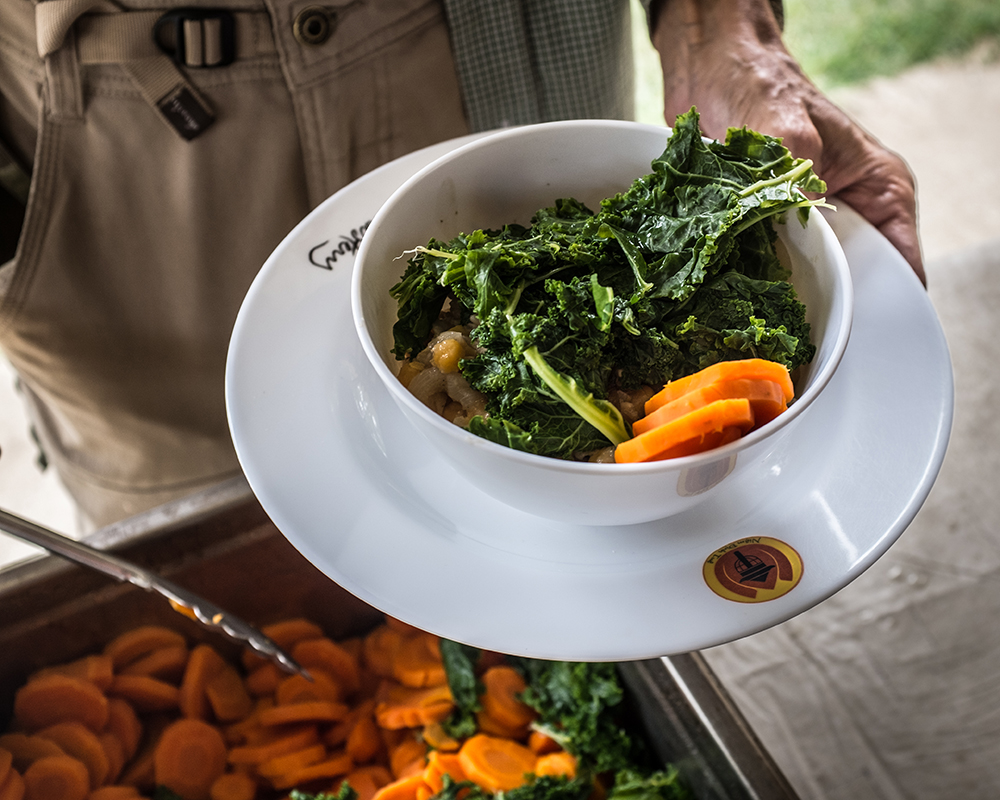
The Wisdom of Interbeing
When you look at your hand, you see it has five fingers. And you notice that the five fingers of your hands have been very harmonious amongst themselves. There has been no fighting. This finger is called the ring finger; we don’t know when people began to put a ring on this finger and not on the other fingers. Do you think the other fingers are jealous of this finger? [laughter] Maybe each of them would like to be the ring finger, but the hand cannot have five ring fingers. The hand should have a thumb and a pinkie. That is why the hand is a wonder. So if every finger wants to be the ring finger, there will be a problem.
Looking deeply into my hand, I see that my hand has the wisdom of nondiscrimination, and that is why peace is possible, harmony is possible, happiness is possible. That wisdom of nondiscrimination comes from the insight of no sameness, no otherness— interbeing. That is the teaching of the Buddha. You know that the Buddha is not a god. Buddha is a human being, like us. He suffered as a young man, but he practiced to overcome his suffering and became our teacher, and there is so much wisdom we can learn from him.
My right hand wrote most of my poems. I never wrote a poem on a computer, only with a pen or a pencil. The hundreds of poems I have written were written by my right hand—except one. One day, I did not have a pen, but there was an old typewriter, so I put in a used envelope, and I wrote a poem with both hands. That is the only poem written by both my hands. I still remember the title of that poem: “The Young Buffalo Chasing after the Sun.” I have made that poem into a song.
My right hand is never proud of the fact that he has written all the poems. He never looks at my left hand with the complex of superiority. He never says, “My dear left hand, it’s me who has written all the poems of Thay. It looks like you are good for nothing.” [laughter] My right hand does not have that kind of thinking and feeling, because she has the wisdom of interbeing, of no sameness, no otherness. That is why my left hand has never been angry at my right hand. My left hand does not have a complex. She does not suffer because she has not written any poems.
In the last few months, I have asked my left hand to do the job of brushing my teeth, and she likes it very much. In the beginning, it was not easy, but now, she can brush my teeth very well and she enjoys that.
One day, many years ago, I was trying to hang a picture on the wall. My left hand was holding a nail, and my right hand, a hammer. That day, my right hand was not very mindful. Instead of pounding the nail, it pounded the thumb of the left hand. What a mistake. Immediately, the right hand put down the hammer and took care of the thumb of the left hand very tenderly, as if taking care of itself, without thinking, “Dear left hand, I’m sorry, I have made a mistake. Please forgive me.” It does not have to do that because it considers itself to be the same as the left hand. It knows the left hand is itself, so there is no need to forgive. The action taken by the right hand was very natural.
My left hand suffered, and my right hand suffered too. We suffer together when we love each other. What happened to my beloved one happened to me. The suffering of my beloved one is my own suffering. And the happiness of my beloved is my own happiness. That is what my two hands experience. They are perfect lovers. They have the wisdom of nondiscrimination, interbeing. My left hand did not get angry, did not reproach, did not blame. She didn’t say, “Right hand, you have done me injustice. I want justice. Give me that hammer.” [laughter] No, my hand does not have that kind of wrong thinking. That is why peace and harmony are always there with my two hands.
I think if the Muslims and the Christians behave like that, without discrimination, there will be no war. If the Israelis and the Palestinians know that they are brothers and sisters, that the suffering of the other side is also their suffering, the war will stop. That is why we should practice to awaken to the truth that we inter-are. The suffering of one is the suffering of the other. That is the great awakening which we have to arrive at for the Earth to be saved.
This teaching is very deep but it’s not difficult to understand, so the young people can learn more about it and put it into practice. The relationships between you and your brother or sister, between you and your father and your mother will be improved. You’ll have a lot of happiness if you practice the teaching of the Buddha on interbeing—no sameness, no otherness.
Eating to Preserve Compassion
The Buddha told a story that he must have heard from a refugee, called the Sutra of the Son’s Flesh. It tells about a young refugee couple with a little boy who fled their country. They had to cross a desert and they did not calculate well, so halfway across, they ran out of food. They knew that they were all going to die. After much thinking and debate, the parents decided to kill the little boy and eat his flesh, so that they could survive. They told each other, “We can have another little boy later on. We have to kill our little boy now so we can live.” So they killed their little boy, and each of them ate one piece of his flesh. They hung the rest over their shoulders to dry in the sun as they walked. Each day, they ate one piece of flesh, but soon they asked, “Where is our beloved little boy now?” They beat their chests, pulled their hair, and cried. Finally the couple got through the desert and they were accepted as refugees in the new country. That is the first part of the sutra.
After having told the story to the monks and nuns, the Buddha asked them, “My dear friends, do you think that couple enjoyed eating the flesh of their son?” Of course, the monks and the nuns said, “No, dear teacher, it’s impossible to enjoy eating the flesh of our own son.” The Buddha said, “Dear friends, we should eat in such a way that preserves our compassion. Otherwise, we will be eating the flesh of our sons and daughters.”
UNESCO told us a few decades ago that every day, 40,000 children die from lack of food and nutrients. And in Europe and America, many of us overeat. Some of us eat because we have pain and sorrow in our heart. We eat to forget the suffering and despair in us and we get fat. Many of us have become victims of obesity.
We have cultivated a lot of corn and other cereals not to feed hungry people, but to feed cattle. In order to produce a piece of beef, we have to use a lot of cereal, which instead could help wipe out hunger in the world. But we use it to make meat and alcohol. If you drink alcohol mindfully, you see that this alcohol might be the blood of your own son or daughter. If you eat meat mindfully, you may see that you are eating the flesh of your daughter or your son. Mother Earth suffers deeply because of our way of eating and drinking. The Fifth Mindfulness Training proposed by the Buddha is mindful consumption. Mindful consumption is the way to heal ourselves and to heal the world.
More than ten years ago, I gave a Dharma talk on this subject in the United States, and I made some calculations about the land, the water, and the forest, and how we use our resources in the United States for food.
Concerning land: 87% of all agricultural land in the US is used to raise animals for food. That is 45% of the total landmass in the US.
Concerning water: More than half of all the water consumed in the US is used to raise animals for food. It takes 2,500 gallons of water to produce a pound of meat. It takes only twenty-five gallons of water to produce a pound of wheat. A vegetarian diet requires 300 gallons of water per day, while a meat-eating diet requires 4,000 gallons of water per day.
Concerning pollution: Raising animals for food causes more water pollution in the US than any other industry. Animals raised for food produce 130 times the excrement of the entire human population—97,000 pounds per second. Much of the waste from factory farms and slaughterhouses flows into streams and rivers, contaminating water sources.
Concerning deforestation: More than 260 million acres of the US forest have been cleared to grow crops to feed animals raised for food. An acre of trees disappears every eight seconds. Tropical rainforests are being destroyed to create grazing land for cattle. Fifty-five square feet of rainforest must be cleared to produce just one quarter-pound burger. Each vegetarian saves one acre of trees per year.
Concerning resources: In the US, animals raised for food are fed more than 80% of the corn that we grow, and more than 95% of the oats. To grow cattle alone consumes a quantity of food equivalent to the caloric needs of 8.7 billion people, more than the entire human population on Earth.
So mindfulness helps us see that our way of eating and producing food can be very violent. What the Buddha said in the sutra is true: we are eating our children because of our way of growing food and producing meat.
One European scholar said that if the West reduced meat eating and alcohol consumption by 50%, it would change the world. With that awakening, we could take action that could save the Earth. Awakening is crucial for our transformation, healing, and survival.
The Nutriment of Sense Impressions
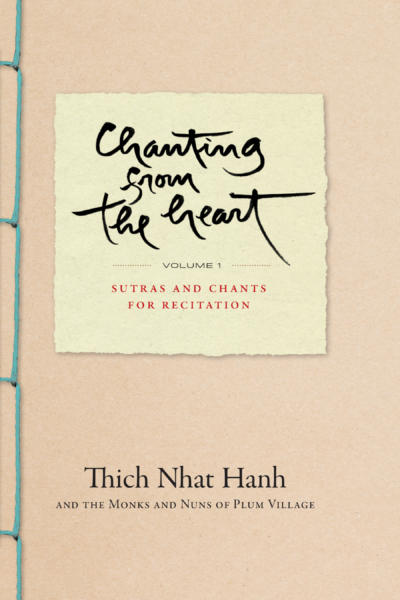
You can find my translation of the Sutra of the Son’s Flesh in the Plum Village chanting book. In it, the Buddha spoke of four kinds of nutriments. The story of the young couple is about the first kind of nutriment, called edible food.
The second source of nutriment is called sensory impressions. We consume through our eyes, our ears, our nose, our body, and our mind. When we watch a movie, we consume sensory impressions. When we read an article in a magazine or see an advertisement, we consume. When we listen to a conversation or a Dharma talk, we consume. What we consume can contain a lot of toxins. If we ingest these poisons, we are destroying this body, this consciousness, transmitted to us by our parents, our ancestors. If we destroy our body and our consciousness by taking in too many toxins, we are eating the flesh of our ancestors, our own flesh, and the flesh of our children and their children. So mindful consumption is directed not only to edible food but to sensory impressions. What we read, what we watch as film, television, news, the conversations we engage in, are objects of consumption.
The Buddha told the story of a cow that has such bad skin disease that she has no skin left, so she has no means to protect herself. When the cow stands by a tree, the tiny creatures living in the bark of the tree fly out and suck her blood. When the cow lies down, living beings in the soil come up and suck her blood. And when she goes to the water, small creatures smell her blood so they come and suck. Without mindfulness of consumption, we are like a cow without skin, and we allow many toxins to penetrate and destroy us. When we destroy ourselves, we destroy our parents, our ancestors, our children. That is why we have to consume with mindfulness. This is the topic of the Fifth Mindfulness Training, mindful consumption.
By the time a child completes elementary school, she has watched 8,000 murders and 100,000 acts of violence on television. That is too much. Because we are so busy, we let television babysit for us. We allow ourselves and our children to be intoxicated by what we consume through our senses.
Remember a time when you had a conversation with a person who was full of hate and violence? After one hour of listening to them, you felt paralyzed. Conversation is also consumption. As practitioners, we have to practice mindful consumption to protect ourselves, our family, and our society.
One day, the former governor of California, Jerry Brown, invited me to come to his city and offer a Day of Mindfulness. Thousands of people came and we practiced walking meditation, sitting meditation, eating mindfully, enjoying a Dharma talk. The next time I came, he told me that the Day of Mindfulness helped decrease violence in his community. So as a mayor, you can practice. As a president of a country, you can practice. As a congressman, as a senator, you can practice to protect your people. As a schoolteacher, as a parent, you can practice mindfulness of consumption to protect your family, your school, your town, your state, your country.
The Bodhisattva Path
If you study the Five Mindfulness Trainings deeply, you see that they are the practice of true love. The first is to protect life. The second is to practice generosity. The third is to protect people from sexual abuse, and the fourth is to practice loving speech and deep listening, to bring harmony and mutual understanding. The fifth is to practice mindful consumption.
About ten years ago, I had the opportunity to sit with a group of friends, including many Nobel Peace Laureates, as we drafted a text called the Manifesto 2000. The United Nations accepted our proposal to declare that the years 2001 to 2010 be a decade of the culture of nonviolence. We are now in the year 2007. We have only three years left and we have not practiced very well.
If you read the Manifesto 2000, you’ll notice that the points are similar to the Five Mindfulness Trainings. Sometimes the same phrases are used, like “share your time, energy, and material resources with those who are in need,” or “practice listening deeply in order to understand.” More than 75 million people have signed the Manifesto, including many heads of states. Schoolteachers have played the most important role in circulating the Manifesto 2000, and in India, 25 million people signed it. You may like to get the text of the Manifesto 2000 from the Internet and compare it with the Five Mindfulness Trainings.
But, after signing the Manifesto, most of us forget and we don’t apply the six points of the Manifesto to our daily life. The Five Mindfulness Trainings are much more detailed, with concrete ways to practice mindfulness of consumption. In the Buddhist tradition, you don’t just sign your name. When you take the Five Mindfulness Trainings, you take them in the presence of a Sangha, and you promise that you will apply the five trainings in your daily life. You promise to recite the trainings every fortnight, and agree that if you do not recite the trainings at least once in three months, you lose the transmission. You practice in the context of a teacher-student relationship, in the context of a Sangha. You recite the five trainings and participate in Dharma discussion with the Sangha to reflect on your recent practice, and you learn how to better apply the five trainings in your daily life in the context of the family, the community, and society.
So when we take the Five Mindfulness Trainings, we don’t just sign and forget. Buddhists have been practicing the five trainings for 2,500 years in the context of a Sangha. When you receive the trainings, you might get a Dharma name. You know that you belong to a community of practice, and you are urged to recite the trainings with other members of your community. You try to practice the five trainings in your daily life, and in the life of your family.
The five trainings are a spiritual path, and if you live according to them, you are on the path of a great being, a bodhisattva. Because you have a spiritual path, you don’t have to worry anymore, you don’t have to be fearful anymore, because you know where to go. The five trainings are the most concrete way to practice mindful living, including mindful consumption. If our awakening is not strong enough, our actions will not be strong enough to save ourselves, to heal ourselves, and to save the world.
Heal Yourself First
I have been consulting with the Buddha on the issue of global warming, and his voice was very clear and simple enough for us to understand. The disasters brought about by global warming will be very big, and many will die, not only humans but also other species. But according to the Buddha, before we die because of global warming, we may have died already from our despair and worries. That is why it’s very important to deal with our fear and despair first before you deal with the issue of global warming. That’s what the Buddha said. You have to heal yourself first before you can heal the Earth. It’s very clear.
His teaching about death and fear is very clear. We are supposed to recognize the fear that is inside of us. Otherwise, the fear will continue to shape our behavior. Breathing in, I know I am of the nature to grow old. I cannot escape old age. There is a fear of getting old, of being abandoned, of not being loved anymore. It lies deeply in us, but we don’t want to face it. The Buddha proposed the opposite. We have to bring our fear up and look at it directly.
I am of the nature to grow old. I cannot escape old age. I accept the fact that someday, I will grow old. I am of the nature to die. I cannot escape death. Look directly, accept your own death. I am of the nature to get sick, to have terminal illness. I cannot avoid sickness. Everyone and everything I cherish today, I will have to let go of one day. My diploma, my position in society, my beloved ones, my wealth, my house, my car, everything. Breathing in, I know that my karma is my only true belonging; only my thinking, my speech, and my actions will follow me. That is the Buddha’s teaching on how to recognize and touch our fear.
The first step is to acknowledge the fact. Those of us who discover that we have AIDS or cancer, at first we don’t want to believe it; we deny it. So denial is the obstacle. We get angry at our self, we get angry at everyone, we get angry at the Buddha, we get angry at God, we revolt. We don’t accept, and we suffer. Before we suffer from our disease, before we suffer from dying, we suffer because of our anger, our fear, our distress, our despair. That is why to learn how to accept is very important.
There was a nun who lived in Hanoi, the capital of Vietnam. She got cancer. One day, the doctor said, “You have only a few months left.” She had lived with cancer for many years and she had tried to heal herself. But still the doctor said she only had a short time to live. So she decided to come to Plum Village to live with Thay one or two months before going back to die. She accepted totally that she would die soon. When she arrived in Plum Village, one sister proposed that she see a doctor. She said, “No, I don’t need to. I did not come to see a doctor. I have come to be with Thay and the Sangha. After a few months, I will go back and die.” She devoted her time to being with us, to enjoying walking meditation and sitting meditation, Dharma discussion, Dharma talks. After three months, she did not die. But because her visa was no longer valid, she decided to go back to Vietnam. One sister said, “Why don’t you go to the doctor and see how things are?” She said, “Yes, why not?” She went to the doctor. The doctor said the metastasis was gone, that she was healthier than ever.
The fact that you accept is very important. After you have accepted the situation, you have peace. With that peace, you can live very long. I have a disciple in Canada. The first time I met him, he was sitting next to me as we were having cookies and tea with a group of friends. He knew that he was going to die in a few months. Friends had arranged for him to sit next to Thay to get some energy or something like that. [laughter] When I learned of his situation, I told him, “It’s okay if you die in a few months. But right now, could we enjoy a cup of tea together? Because we still have the time to enjoy this tea and cookies.” And we enjoyed the tea together, because it’s rare to sit together as a group and enjoy each other’s presence. I asked, “Are you capable of living deeply this moment of tea and cookies?” He said, “Yes!” He devoted all his mind and body to drinking tea, and he was truly joyful during that time. After that, I advised him to try to live in that way for the time that was left. He accepted that. He became a member of the Sangha. He continued the practice, and he continued to live for another fifty years. He became a member of the core community of the Order of Interbeing. His name is True Rebirth.
The teaching of the Buddha concerning fear can be applied to our situation of global warming. Our civilization has a life span and might come to an end. Before our civilization, many other civilizations have been destroyed. This is the history of mankind, of the Earth. Many civilizations have become extinct, so why not this civilization? The way we use our cars, the way we consume, the way we devastate our Earth—if we continue like this, the end of our civilization will be a certainty, unless there is a great awakening.
So we can practice like this: Breathing in, I know this civilization is of the nature to die. Breathing out, I accept that. It’s like a person who accepts that he or she has a disease and she has to die. If we cannot accept that, if we continue to revolt, to allow fear, anger, and despair to overwhelm us, we will die before the destruction brought about by global warming will actually come. We will die of our despair, our anger, our frustration first. That is why learning to accept the end of our civilization may be crucial. That is the Buddha’s teaching. If we accept the fact that our civilization will end, then we have peace. And with that peace, we might have a chance.
We have the technology we need to save ourselves, but because we are in despair, anger, division, discrimination, we cannot come together and make use of our technology. The advice given by the Buddha on the issue of global warming is to practice accepting the truth that if we continue like this, the end of our civilization cannot be avoided. Maybe 60% or 70% of mankind will die, together with other species, and the Earth may take another three million years to create another environment for living. But speaking in geological time, one million years is nothing at all.
The wisdom offered by the Buddha is that when we accept impermanence, our own death and the death of our civilization, then we will have the peace, the strength, and the awakening that will bring us together. There will be no more hate, no more discrimination, and then we will be in a situation that we can use our technology to save our planet.
When we come together in a retreat like this, we allow our cars to rest for several days. The 22nd of September has been accepted as a global no-car day. Tomorrow there will be a celebration. Here in Deer Park, and throughout North America and Europe, friends have participated in the practice of no-car day. Each week, you don’t use your car for at least one day. You may go to work. You may work at home, not use your car, or you might use a bicycle. Together we have already practiced many no-car days. Tomorrow we hope we can make a gift to the Earth of 100,000 no-car days. That’s not enough, but that is something. It demonstrates our awakening, our willingness to act, to practice mindfulness of consumption. We have tried to reduce the use of our cars by 50%, and in Deer Park, we use biodiesel cars that are much less polluting. Together, we will change. We will change our consciousness and our way of life, and we will change the situation.
This is Thich Nhat Hanh’s Dharma talk on September 21, 2007, transcribed by Natascha Bruckner and Eve Heidtmann, and edited by Barbara Casey.
